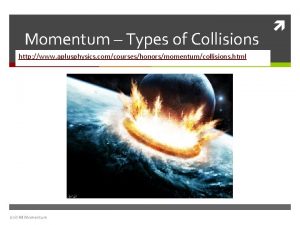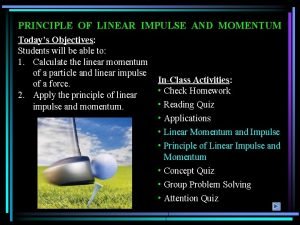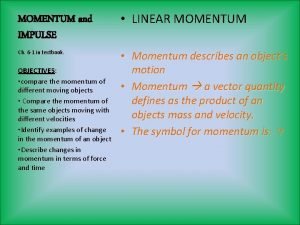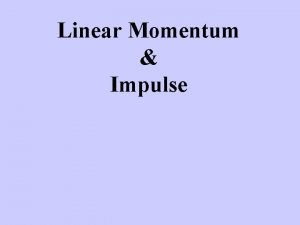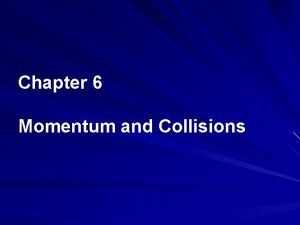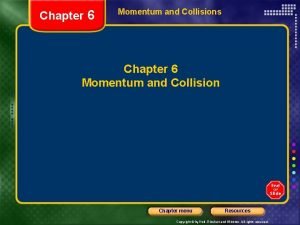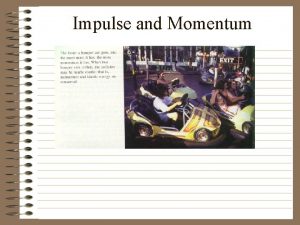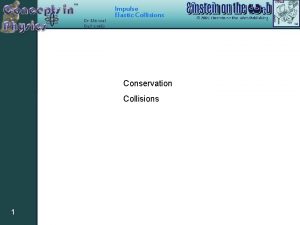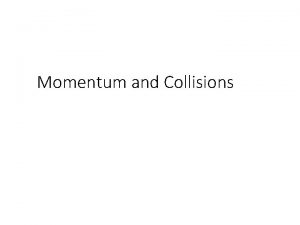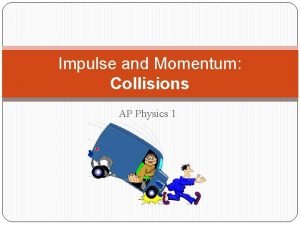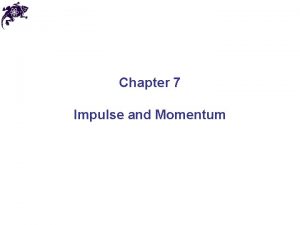Momentum and Collisions Momentum and Impulse Linear Momentum









- Slides: 9

Momentum and Collisions Momentum and Impulse

Linear Momentum – a vector quantity defined as the product of an object’s mass and velocity Momentum = mass * velocity p=mv Measured in kilogram-meters per second (kgm/s)

Linear Momentum You can think of momentum as a measurement of how difficult it is for an object to stop its motion Large objects have more momentum than small ones Fast objects have more momentum than slow ones

Impulse-Momentum Theorem Changes in momentum take force and time For situations involving constant force, we can use the Impulse-Momentum Theorem – Force * time interval = change in momentum – FΔt=Δp or FΔt=Δp=mvf-mvi

Impulse-Momentum Theorem Impulse – for a constant external force, the product of the force and the time over which it acts on an object – Represented by Force * time interval FΔt or J Unit is kg*m/s Used to explain the importance of followthrough in such as pool or baseball – By keeping the bat in contact with the ball longer, more force is applied to the baseball

Impulse-Momentum Theorem Use the impulse-momentum theorem to determine stopping time and therefore stopping distance with the following equation: – Distance = average velocity * time interval – Δx=½(vi+vf) Δt Objects with more mass require greater stopping times and distances than objects with less mass

Impulse-Momentum Theorem

Impulse-Momentum Theorem Changes in momentum over longer time periods require less force – Use of safety nets and giant air mattresses by firefighters or trampolines

Impulse-Momentum Theorem
 Linear impulse and momentum
Linear impulse and momentum Momentum of collision
Momentum of collision Aplusphysics momentum-conservation answer key
Aplusphysics momentum-conservation answer key Linear impulse momentum equation
Linear impulse momentum equation Which has a greater momentum a truck with a mass of 2250 kg
Which has a greater momentum a truck with a mass of 2250 kg Linear momentum definition
Linear momentum definition A 1850 kg luxury sedan stopped
A 1850 kg luxury sedan stopped A moderate force will break an egg
A moderate force will break an egg Chapter 6 momentum
Chapter 6 momentum Is momentum conserved in all collisions
Is momentum conserved in all collisions


